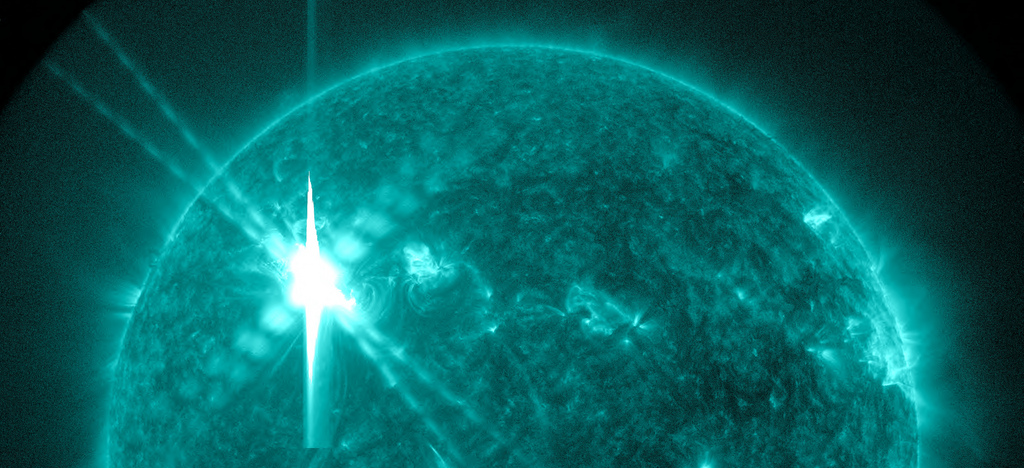Solar activity on the rise
Faraway as it is, anyone could mistake the Sun for a smooth, uniform, boring ball of gas but the reality could not be more different. Earlier this week, in the space of two days, the Sun emitted four massive blasts of radiation with Tuesday’s solar flare being the strongest of the year so far.
The Sun’s activity changes in intensity periodically, with its main cycle taking an average of eleven years to complete. The present cycle, cycle 24, started in 2008 and is expected to peak later this year. This increase in solar activity leads to an increase in a number of a variety of solar phenomena, such as sunspots, solar flares and coronal mass ejections (CMEs).
Solar flares are extremely strong bursts of energy that occur when energy stored in the magnetic fields of the Sun’s atmosphere is suddenly released. A related phenomenon, coronal mass ejections are massive eruptions in the solar atmosphere that release millions of tonnes of solar material into space.
Flares can fall into one of five categories: A, B, C, M, or X, each category ten times stronger than the one before, with X-class flares being the strongest. Additionally, each category, except X-class, is further divided into nine subcategories, from 1 to 9. The most intense flare ever recorded went as high as X28. This week’s flares ranged in intensity from X1 to X3.2.
The biggest flare in recorded history to hit the Earth happened in 1859. On September 1, the astronomer Richard Carrington was studying sunspots when he observed two patches of white light, as bright as the Sun itself. On the following night the aurora, a phenomenon usually confined to the northernmost latitudes, could be seen as far south as the Caribbean and was so bright that newspapers could be read by its light. Telegraph systems all over the world failed and many operators suffered electric shocks. The electric currents induced in the telegraph wires by the aurora were so strong that some systems could still send and receive messages after their power supplies had been disconnected.
A flare or CME aimed at the Earth can have some consequences, from disrupting long-range radio communications and GPS, to damaging satellites orbiting the Earth. In 1989, the damage caused to the Hydro-Quebec electricity transmission system by a particularly strong flare left over six million people without power for almost half a day. Although they may endanger any astronauts in space at the time, the Earth’s magnetic field and atmosphere protect us on the ground from any incoming radiation so even the strongest flares are no cause for panic.

Comments